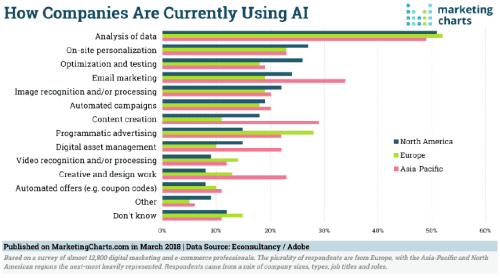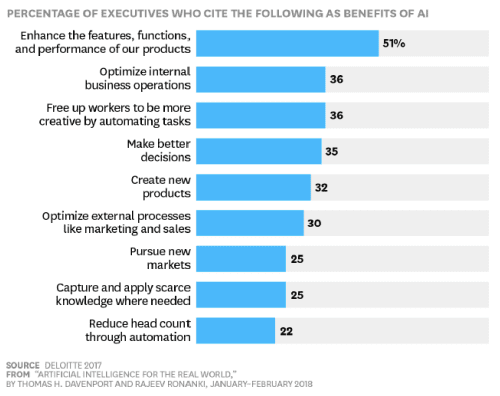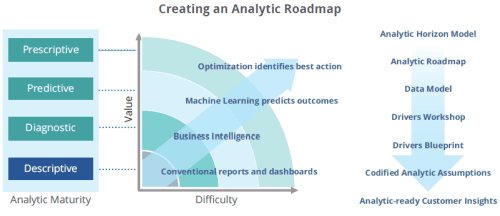There is much talk of AI automation of many critical business processes over the next decade as the technology matures. Management and workers throughout organizations are wondering, “Where does that leave me and my job?” With so much focus on the technology of artificial intelligence, the question of human/machine working relationships and learn– ing has received relatively short shrift in the broad scope of company culture.
Instead, much of the focus has been on the human-like features of AI: simulation of the human voice in chatbots for customer service interventions, for instance, and the use of virtual personal assistants like Google’s Alexa to conduct massive data searches to answer “live” queries. These are examples of machines imitating human voice and syntax—trained as they are on the “real thing” to help humans feel more comfortable with them.
But, when and how will we humans interact with the AI-driven business solutions and platforms once they are in operation? What will our roles be? Many worry about being reduced to tasks rather than jobs or roles in their companies—tasks such as “stoking the furnace” of AI platforms—checking to see that mistakes or analytical outliers are attended to and ensuring that dashboard outputs are functioning and accessible. Will we be the servants of ever more powerful AI masters?
A survey of recent research on the topic reveals that the answer is a resounding “No.” After all, humans are the architects of the AI engines. As more and more companies embark on digital transformation journeys with AI, their experiences are reassuring about what we humans have to offer that the machines cannot (at least not for some time and more evolution of both tech and homo sapiens). This paper will explore that value and how it is achieved.
Business Adoption of AI
But first, let’s check on the proliferation of AI in business. A June 2020 Gartner report showed that management initiatives to digitize their companies’ businesses had grown from 62% in 2018 to 82% in 2019. (1) In another citation, Gartner reported that enterprise use of AI grew over 270% from 2014 to 2019. It had an impact on staff recruitment, consumer insights, marketing, and unified communications. Since 2013, the number of jobs that use AI has increased by 450%. (2)

Another report from Gartner shows the impact of AI’s three main types: machine learn- ing, computer vision, and natural language processing: “By 2021, 30% of net new revenue growth from industry-specific solutions will include the technology,” it says. And 40% of new enterprise applications will include it. (3)
The experience of companies undergoing these adoption rates has been focused on retrain- ing their current workforce and finding new hires who exhibit the talents needed for organizations that have to become “continuously learning”—just as AI systems already are capable of doing, although not in quite the same way.
In a study of 250 executives to learn about their goals for AI initiatives, Harvard Business Review (HBR) revealed that reducing head count was mentioned by less than one quarter (22%) of the companies. Rather, they wanted to handle the growing number of employee and customer interactions without adding staff. Their main goal was to enhance the features, functions, and performance of their products. As a result, they were delegating routine communications to machines while transitioning customer-support personnel (for example) to “more complex activities, such as handling customer issues that escalate, conducting extended unstructured dialogues, or reaching out to customers before they called in with problems.” (4)

Management at these companies on the forefront of the AI revolution had an understand- ing of the benefits and limits of the technology. They understood that AI is most successful in addressing problems that are well-defined and narrow in scope, whereas humans excel at discovering problems and creating novel solutions.
The HBR article also noted that the more complex the AI project, the less likely it was to be successful. Most businesses have had trouble implementing AI on an enterprise level to get the results they wanted; they have had better success choosing “low-hanging fruit” projects that enhance business processes—processes such as automation, gaining insight through data analysis, and engaging with customers and employees.
Capturing Human Insights
Analytics2Go has been helping companies find their high-priority pain points and configur– ing AI solutions to address them through our Analytics Horizon Process since our founding in 2017. By identifying potential analytic initiatives and performance drivers with our clients’ knowledge workers, we establish the AI priorities to achieve their objectives. The resulting analytic roadmap becomes the Analytic Horizon Model for their business. Once it is mapped, it can be executed and aligned with initiatives already in progress.

Because it’s a plan that lends itself to the capabilities of AI, implementation risks are reduced. And, most significantly, the model is created to align with the company’s business strategy. Despite this important alignment, only 23% of respondents to Gartner’s Fifth Annual CDO Survey said they defined and tracked metrics to measure the value delivered to stakeholders by data and analytics. (5) Here is where humans step in again: identifying key performance indicators (KPIs) for each AI initiative and monitoring them so they deliver.
Our review of the literature on this subject revealed some key points for companies to remember along their digital transformation journey. It will require a change in their work culture—a collaboration with the new AI workhorse. Workflows will be altered. Workers will have to embark on continual learning and relearning as the AI technology advances. Fifty-three percent of the 9,000 respondents to Deloitte’s 2020 Global Human Capital Trends Report acknowledged that at least half of their workforce would need to completely change their skills. (6)
The way one blogger at ISA Interchange described the challenge was “to define new and improved skills, knowledge, and experience (SKEs).” In his view, companies will need to change how they support workforce development by offering “soft skills” in communications and team management in addition to a working familiarity with more technical skills. (7)
In 2020, you might say siloes are out; extended teams are in. A2Go has been experimenting with collaboration between our data science team in Brazil and our domain-expertise team in the US, sharing knowledge and learnings. We find that the benefit is twofold: Our product development is informed by what we are learning from the businesses we help, and our closeness to the product development process is helping our domain experts become more knowledgeable about where AI can add substantial value to business processes.
During the COVID-19 pandemic we have found that our domain expertise was invaluable in helping us pivot from offering AI solutions as a service to offering our AI solutions as products augmented by services. The purpose for this was to give our clients and prospec- tive clients quicker, easier, more affordable access to the solutions they need during the transition into our world’s as yet unknown “new normal.”
References
-
“Tie Your Data and Analytics Initiatives to Stakeholders and Their Business Goals,” Gartner ID G00724711
-
Quoted by Sam O’Brien in his blog entitled “How AI Is Changing the Modern Work– place,” May 1, 2020, x.ai
-
“Tech CEOs: Questions AI Providers Need to Be Able to Answer to Convert Prospects,” Gartner ID G00717845
-
“Artificial Intelligence for the Real World,” by Thomas H. Davenport and Rajeev Ronanki, Harvard Business Review, 2018 January-February issue
-
“Tie Your Data,” Gartner
-
“The Social Enterprise at Work: Paradox as a Path Forward,” 2020 Deloitte Global
Human Capital Trends; quoted here:
-
https://www.forbes.com/sites/servicenow/2020/07/01/
qa-a-chros-vision-for-workplace-reinvention/#15b71d8c8bd3
-
“Where Do Humans Fit in the Factory of the Future?” by Doug
Aldrich, published in InTech magazine: https://blog.isa.org/ humans-robots-factories-future-process-industries
Victoria Cooper works at A2Go’. She previously worked as Corporate Communications Director at PRTM (pre-acquisition by PwC) and as the founder of several global magazines in the fields of economic development and business technology.
